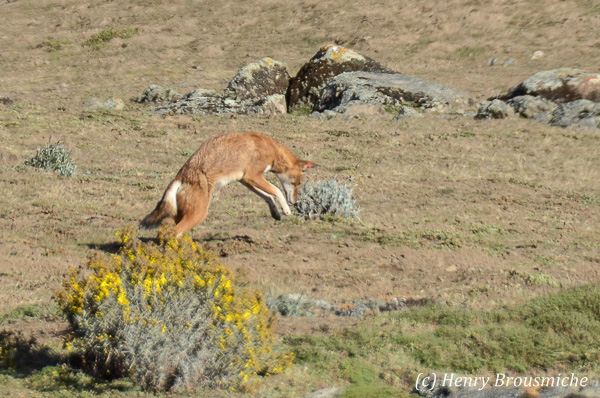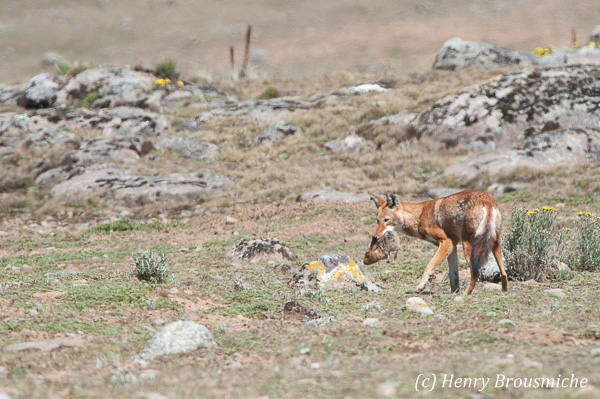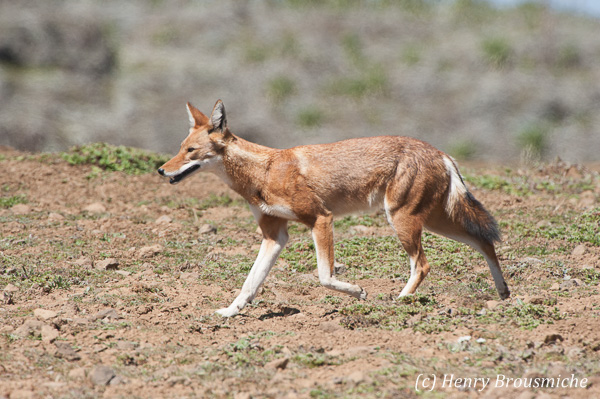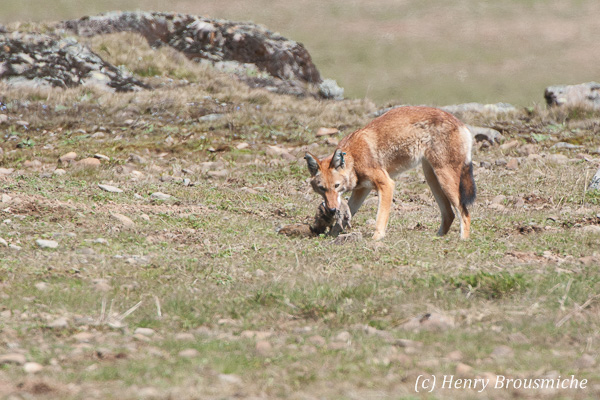The Wolf of Abyssinia
The Wolf of Abyssinia, or Wolf of Ethiopia, is the third rarest canid in the world (after the Darwin Fox and the Red Wolf) with a total estimated population of less than 500 individuals in the wild; 300 of which live in the Mont Bale National Park and none live in captivity. This species is classified as Endangered by the International Union for the Conservation of Nature (IUCN).
The wolf feeds mainly on rodents, especially hunting the giant rat-taupe, and lives in a pack. In each group there is a dominant couple who are the only pair to reproduce. The wolf reaches sexual maturity at the age of 2 years. The mating period usually runs from August to November. After a period of gestation of 60 to 63 days, the female gives birth to her young in a lair which she has specially dug for this purpose. She can give birth to 2 to 6 cubs each time.
For their first 4 weeks, the cubs are completely dependent on their mother. When they reach 10 weeks they have usually been weaned. Until they are 6 months old, the cubs live from food provided by their parents. The young females reach their adult size at the age of 1 year and then leave their pack of birth. A pack consists of 3 to 16 wolves and lives on a territory of 4 to 15 sq km.
When it moves, the wolf marks the boundaries of the pack territory by spraying urine and leaving droppings. The spectacle of a wolf hunting is a most striking spectacle to observe. Brown-tailed rats live in large colonies and run from burrow to burrow. The Abyssinian wolf stands still until one of them shows itself, and then the wolf makes a jump on him. If he fails, he seems to lose his composure, and begins to dig violently as though frustrated. This is a strange activity as the soil is honeycomb and has many holes, and by the time the wolf has even dug a depth of a paw, the rat will have already travelled several metres to another burrow.






